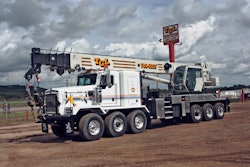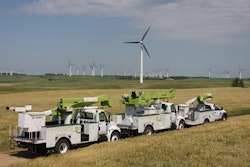With the passing of the submission deadline for "America's Next Top Energy Innovator" challenge, the U.S. Department of Energy (DOE) announces that it will give Americans the chance to vote for the most innovative and promising technologies supported by the program.
The DOE also announces that 36 start-up companies have answered the call to participate in this first of its kind effort. These companies have signed 43 option agreements allowing them to license valuable, cutting-edge technologies developed and patented by one of the DOE’s 17 National Laboratories and the Y-12 National Security Complex. They have done so under a streamlined, simplified application process and a greatly reduced upfront fee of just $1,000 which was offered from May 2 to December 15, 2011.
The top start-up companies – based on the public vote and an expert review – will be featured at the annual gathering of clean energy investors and innovators around the country, the 2012 ARPA-E Energy Innovation Summit.
"We’ve challenged America's entrepreneurs and innovators to create new businesses based on discoveries made by our world-leading national laboratories,” says U.S. Energy Secretary Steven Chu. “This is about cutting through the red tape and knocking down barriers so that we can take full advantage of America's innovation machine. We are unleashing start-up companies to do what they do best: create new products, new industries and new jobs.”
Beginning in mid January, Americans will be able to view profiles of the companies at http://energy.gov/topinnovator and vote on which ones could make the greatest contributions to the country’s economic and energy future. An expert panel will also evaluate the companies and which ones have made the most progress toward their business plans.
Below is a sampling of five of the innovative companies participating in the challenge:
Vorbeck Materials, based in Jessup, MD, is using a Pacific Northwest National Laboratory (PNNL)-developed method for building tiny chemical structures to greatly improve the performance of lithium-ion batteries. Lithium-ion batteries are rechargeable batteries that are widely used in portable devices such as laptops and power electric vehicles. Vorbeck is using PNNL’s method to develop better lithium air and lithium sulfur batteries. The new material in Vorbeck’s batteries stores twice as much electricity at high charge and discharge rates as current lithium-ion batteries, and creates increased battery capacity and a longer cycle life.
TrakLok, Inc., based in Knoxville, TN, intends to use an Oak Ridge National Laboratory (ORNL)-developed technology for tagging, tracking, locating and communicating with cargo containers and trailers in transit. The ORNL technology provides an avenue to meet increasing requirements for shipping containers to be "smart boxes" that can be tracked electronically. TrakLok uses GPS technology and satellite communications as part of its tracking and warning capability and international container locking technology to protect against container tampering, theft, vandalism and smuggling. Shipments can be tracked through a web-accessible, information technology-based global tracking system to provide real time visibility of cargo.
IPAT, based in Nevada, IA, is using gas atomization technology developed at Ames Laboratory to make titanium powder with processes that are 10 times more efficient than traditional powder-making methods — significantly lowering the cost of the powder to manufacturers. The powder form of titanium is easier to work with than having to cast the metal — where manufacturers melt and pour liquid metal into molds — particularly given titanium’s tendency to react with the materials used to form molds. Titanium’s strength, light weight, biocompatibility and resistance to corrosion make it ideal for use in a variety of parts — from components for artificial limbs — like those used by wounded veterans returning from Iraq and Afghanistan — to military vehicle components, biomedical implants, aerospace fasteners and chemical plant valves.
e-Chromic LLC, based in Boulder, CO, will use electrochromic technology developed by the National Renewable Energy Laboratory (NREL) to create a new thin film window material that reflects sunlight on demand, making windows more energy efficient while reducing cooling costs for consumers.
Umpqua Energy, based in Medford, OR, is using an Argonne National Laboratory technology to develop a system that allows a gasoline engine to operate in an extreme lean burn mode in order to increase gasoline mileage. One negative side effect of a lean burn engine, whether powered by gasoline or diesel fuel, is an increase in the amount of harmful gases released to the environment. The company expects to both increase fuel economy and simultaneously reduce emissions with its system.
The America’s Next Top Energy Innovator challenge complements the DOE’s overall efforts to support innovative ideas and the goals of the administration’s “Startup America” initiative by supporting high-growth entrepreneurship and start-up companies. To learn more about this initiative, visit http://www.whitehouse.gov/blog/2011/12/08/helping-job-creators-get-capital-they-need.



















